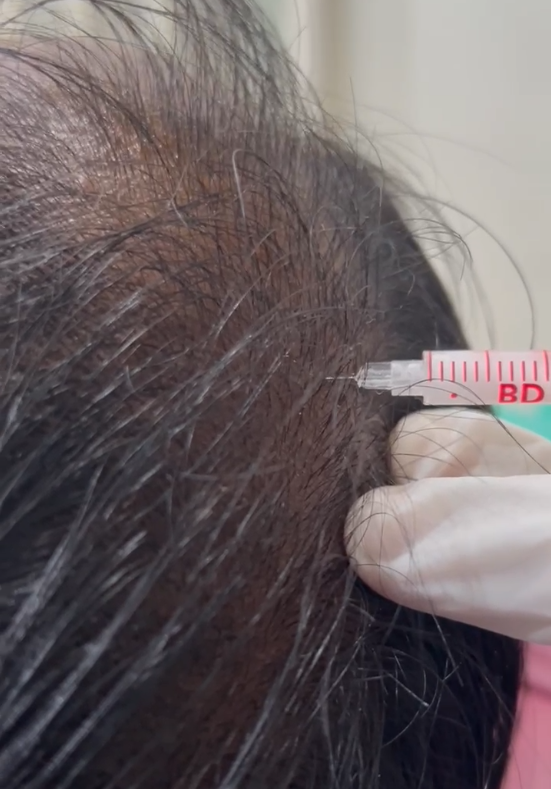PRP / GFC Hairloss treatments
Platelet-Rich Plasma (PRP) therapy for hair loss is a non-surgical, minimally invasive procedure that uses the patient's own blood to stimulate hair follicles and promote hair regrowth. PRP is derived from the patient's blood and contains a concentrated amount of platelets, growth factors, and other bioactive proteins that are thought to play a role in the healing and regeneration of tissues. Here are the key aspects of PRP hair loss treatment.
Procedure
The PRP hair loss treatment typically involves the following steps

- PRP is believed to stimulate hair follicles by promoting cell proliferation, increasing blood supply, and reducing
inflammation.
- The growth factors in PRP may help prolong the growth phase of the hair cycle and induce dormant hair follicles to
become active.
- PRP therapy is often considered for individuals with androgenetic alopecia (genetic hair loss), alopecia areata, or
those experiencing thinning hair.
- Acne Scars: The treatment is effective in reducing the
visibility of acne scars and improving overall skin texture.
- It is generally more effective for individuals in the early stages of hair loss or those with miniaturized hair
follicles.
- The frequency of PRP treatments can vary, but initial treatments are often performed in a series spaced several weeks
apart.
- Maintenance treatments may be recommended every 4-6 months to sustain the results.
- Results from PRP hair loss treatment are variable, and individual responses can differ.
- Some patients may notice increased hair thickness, improved hair texture, and a reduction in hair shedding.
- Results may become visible after a few months, and continued improvement may occur with subsequent treatments.
- PRP hair loss treatment is minimally invasive, and there is typically little to no downtime.
- Patients can usually resume their regular activities immediately after the procedure.
PRP therapy is sometimes used in combination with other hair loss treatments, such as topical medications (e.g., minoxidil) or low-level laser therapy, to enhance results.
It's essential to consult with a qualified healthcare professional, typically a dermatologist or a specialist in hair restoration, to determine if PRP therapy is suitable for a specific individual and to discuss expected outcomes.
- While PRP therapy is generally considered safe, it may not be effective for everyone, and results can vary.
- The evidence supporting the effectiveness of PRP for hair loss is still evolving, and more research is needed to
establish standardized protocols and determine the long-term outcomes.
- 10:00am - 2:00pm & 5:00pm - 8:00pm
- 10:00am - 2:00pm & 5:00pm - 8:00pm
- 10:00am - 2:00pm & 5:00pm - 8:00pm
- 10:00am - 2:00pm & 5:00pm - 8:00pm
- 10:00am - 2:00pm & 5:00pm - 8:00pm
- 10:00am - 2:00pm & 5:00pm - 8:00pm
- Closed
 (1).png)